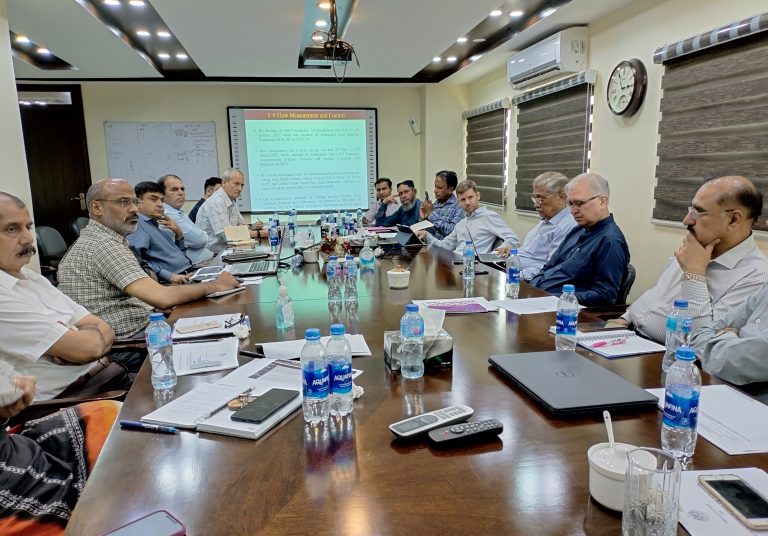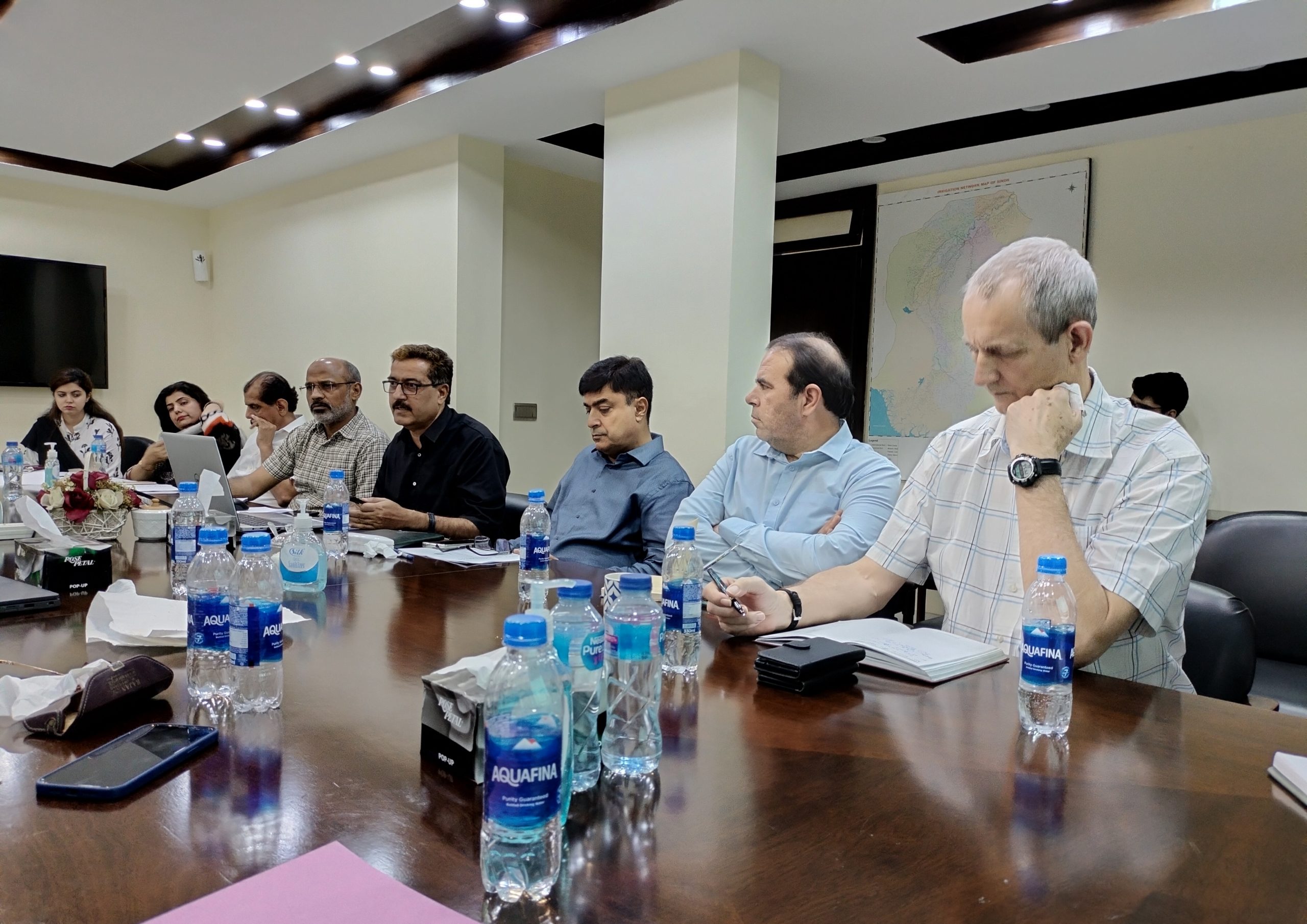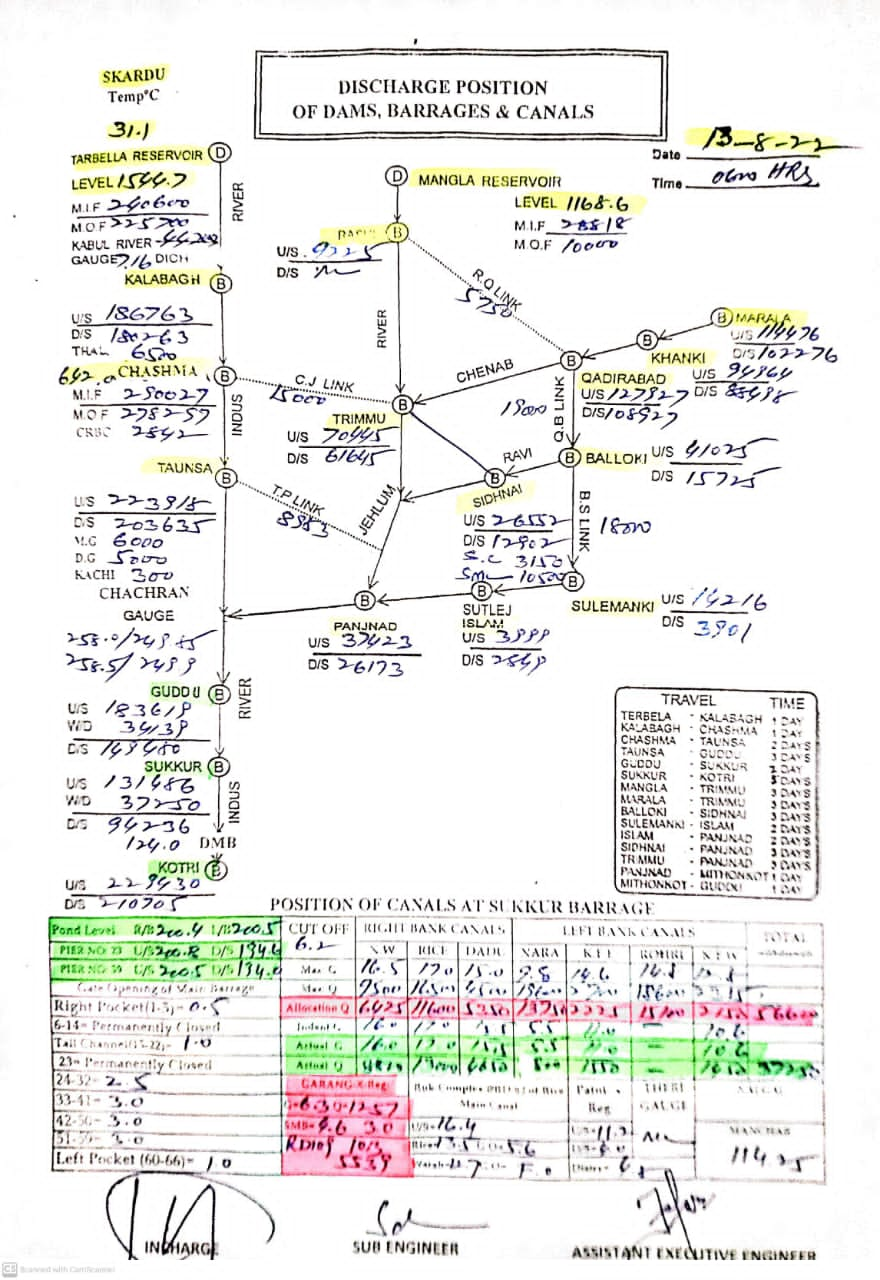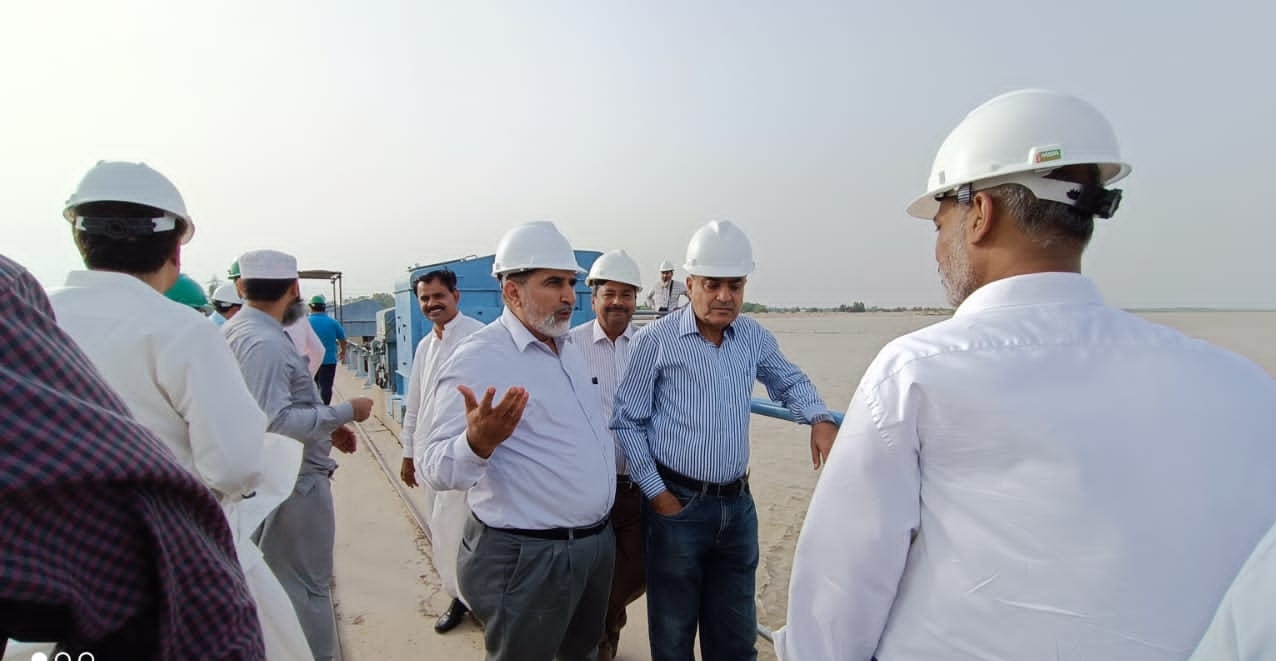
WB experts and Sindh Irrigation and Wildlife Departments’ officials review the situation in a meeting held in Karachi.
By Rehan Khan Khushik
Karachi
A meeting of international experts and the officers of concerned departments of Sindh government on Saturday, noted that the Indus Dolphin is under threat due to reduced flow of water in Indus River.
The Indus River Dolphin locally known as ‘Bulhan’ is found in the lower Indus basin in Pakistan, where there used to be their nurseries at 25 locations between Guddu to Sukkur but the continuous shortage of water has severely affected them.
The meeting also reviewed the flows of water and according to data provided by Sindh Irrigation Department officials, at Guddu Barrage, it was 183619 cusecs upstream and 149480 downstream on Saturday August 13, 2022. Flows of water at Sukkur Barrage was 131486 cusecs upstream and 94236 downstream. The water discharge at upstream Kotri Barrage was 229430 cusecs and 210705 downstream.
WB expert Takeaki Sato, Senior Environmental Specialist, Imran ul Haq, Senior Social Development Specialist and E&S consultant, Ibad Ur Rehman held meetings with direct and indirect stake holders over the Protection of Indus Blind Dolphins at PCMU hall in Karachi.

The meeting was told that Indus Blind Dolphin is rare species which is living in grouping at upstream Sukkur. According to Sindh Wild Life Department sources there have been reports of dolphins becoming stranded in off taking canals of Guddu and Sukkur Barrages. It is also believed that dolphins get stranded into the canals during search of small fish.
In this regard, Deputy Conservator, Sindh Wildlife Department, Sukkur Region Adnan Hamid Khan said that Indus Blind Dolphin moves in creeks of river frequently during flood season for prey and get trapped there when the flood water recedes. “Moreover, the dolphin is under threat due to fishing nets of the fishermen”.
He further said that the local people are still not aware about this mammal and they think this is a harmful animal, which may attack on human beings and that’s why people attack on them with sticks and guns causing their death.

He said that Sindh Wildlife Department has taken legal action against those people involved in killing of dolphins. “In recent past department has lodged FIRs against the killers of Dolphins and cases are pending in court of law”.
He told that female Dolphins become pregnant for 9 months and after that give birth to a baby having length of 2 and half a foot. It takes nine to ten years for becoming mature. While length of mature male dolphin is nine to ten feet with 90 kg weight and female dolphin’s length is 8 feet with 80 kg weight. The survival age of Dolphin varies from 35 to 40 years. In 19 90s, these species were killed frequently for medical purpose but now laws and legal acts were framed against such people therefore people are avoiding to kill dolphins for medicines use.
He said that for conservation of Indus Dolphin, conservation centers have been established at Guddu and Sukkur Barrages by Sindh Wildlife department and deployed staff for rescue of Dolphins.
Dr. Ali Asghar Mahesar, an environment expert said that before construction of Hydraulic structures on mighty River Indus as well as five tributaries – Sutlej, Beas, Ravi, Chenab, and Jhelum of Punjab, the movement of Indus Blind Dolphins was observed from Himalaya to Arabian Sea and parallel to tributaries of Punjab. He said that after construction of hydraulic structures, the movement of Dolphins confined between fragments of Hydraulic structures that was why number of Dolphins reduced in compartments of barrages. During survey in n 1972, hardly 150 Dolphins were observed between Guddu and Sukkur reach however their number increased up to 1419 as per population survey in 2019 with funding support the World Bank.
From Sukkur to Kotri reach, a number of dolphins have been finished due to shortage of water therefore there is a limited number of dolphins available there which too are suffering due to none availability of water from Sukkur to Kotri reach.
He said that some experts advised for minimal water should be released permanently for survival of endangered specie.
A World Bank Environmental Specialist Takeaki Sato urged Sindh Wildlife department to conduct scientific survey of Dolphins at least once yearly.
The WB has approved 196.5 million rupees proposal submitted by Wildlife department for rescue and population survey of Dolphins which is under implementation through Sindh Barrages Improvement Project. With support of the WB, rescue center and squad for rescue of Endogenous Indus Blind Dolphins have been formed for rescuing stranded dolphins in canals and creeks. The WB is receiving monitoring reports regarding any injury or fatality of Dolphins in Guddu to Sukkur reach on monthly and quarterly basis.

Francois Onimus, Water Resources Specialist, TTL Task Team leader WB, focused on availability of water between Taunsa to Guddu reach, Guddu to Sukkur Reach and Sukkur to Kotri reach for computing variation of water flow among these reaches for minimal releasing of water downstream Kotri Barrage for survival of ecological species and some extent control of sea intrusion.
Prof Dr. Abdul Latif Qureshi water expert, American water expert Dr. Kyle Feist , Ghulam Mohi u ddin Mughal Project Director Sindh Barrages Improvement Project Guddu and Sukkur Barrages, DPD SBIP Sajid Ali Bhutto, Director SBIP Abdul Razzak Memon and Director Mechnical SBIP Iqbal Ahmed, Technical officer SBIP Imran Aziz Tunio, Ehsan Leghari PC Project Coordinator of PCMU of Planning and development government of Sindh, Dr Mariyam Minhas and Dr. Ali Asghar Mahesar and others attended meeting and discussed the issue.
Imran Aziz Tunio Water Resources Expert said that by the early 1990s, the Indus Dolphin had undergone an 80% reduction in range, becoming absent from the upper and lower reaches of the Indus River and from four of its largest tributaries. Today the range of the Indus Dolphin is understood to extend over just 1000 km, confined to five contiguous sections of the Indus River (each reach separated by a barrage), and in the Beas River in India.
He said that Indus Blind Dolphins has been suffering due to deficit of water between Guddu to Sukkur reach and Sukkur to Kotri reaches, therefore, minimal environment flow may be determined by Indus River System Authority (IRSA) otherwise this indigenous species’ existence will be vanished in lowered Indus River System.
Ghulam Mohi u Ddin Mughal PD SBIP said that through SBIP funded by WB, all kind of efforts were taken to protect Indus Blind Dolphins. He said that SBIP of Guddu and Sukkur barrage was in progress but it was focused on protection of Indus Blind Dolphins and other environmental sector.
When contacted, the former WWF official, environment expert Nasir Panhwar said that presently Indus Blind Dolphin is in threat therefore government of Sindh must take necessary steps for environmental flows in lower Indus River otherwise these species will not remain anymore.
_________________
Photos by Rehan Khan Khushik